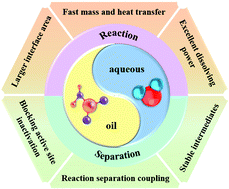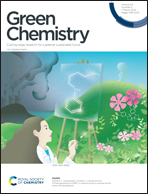Sustainable biomass hydrodeoxygenation in biphasic systems
Abstract
Biomass and its derivatives require upgrades to produce high-quality liquid fuels and bulk chemicals by reducing their oxygen functionalities comparable to petroleum resources. Hydrodeoxygenation (HDO) as a promising technology can effectively cleave the C–O–C, C–O–H and C–C bonds from oxygen compounds in biomass and its derivatives to bio-based fuels and chemicals via the synergistic effect of catalysts and solvents. Currently, some reviews have reported the progress of the design and development of catalysts in biomass HDO, while the considerable advances of solvents, e.g. water–oil biphasic systems, still lack a summary. This review provides a comprehensive overview of the various mechanistic features of biomass HDO influenced by water–oil biphasic solvents, including the increase of the reaction interface, stabilization of transition states, hindrance of active site inactivation, reduction of the hydrolysis rate, enhancement of the separation efficiency and increase of the mass transfer rate by modulating the solubility of the reactants (or products). Furthermore, the reaction separation coupling in water–oil biphasic systems is discussed in detail to explore novel catalytic systems for renewable fuel production from biomass. Finally, some personal perspectives are provided to highlight the opportunities for water–oil biphasic systems in the field of biomass HDO.

- This article is part of the themed collections: Green Chemistry Reviews and Green Chemistry Reviews


 Please wait while we load your content...
Please wait while we load your content...